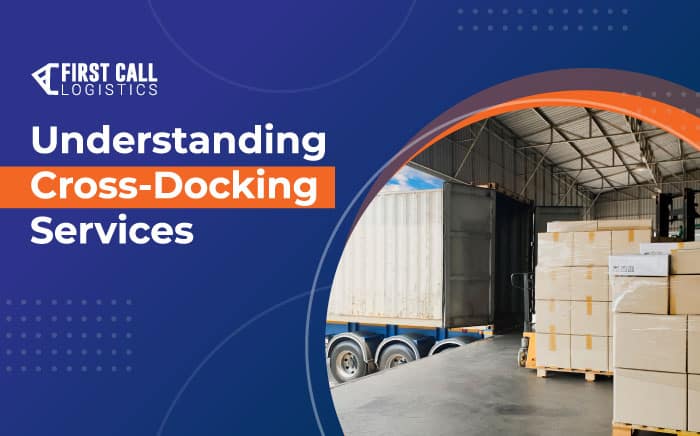Understanding Cross-Docking Services

The guiding principle of all logistics is to meet customer needs in the most efficient way possible, both to the benefit of customers and the companies providing goods. Developing new ways to speed up delivery times, eliminate waste, and use your company’s existing transportation network and resources to the fullest are central to the goals of any company with a logistical component.
Cross-docking is one of the key methods logisticians employ that, in the right circumstances, can streamline a company’s shipping process and avoid unnecessary delays, storage, and costs. Here are the basics you should know about cross-docking, the most common ways it can be used, and why it can provide long-term advantages to your business.
What Is Cross-Docking?
In its simplest terms, cross-docking is a strategy that skips the need for handling or storing inventory. Instead, inventory items are sorted and distributed as-ordered (rather than in bulk to be placed in storage) and staged for shipment directly to users or retailers, without the goods being held at length in a warehouse location for future distribution.
This process happens within a distribution docking terminal, a facility split between inbound and outbound docks with minimal storage space between. The physical process of transporting goods from inbound docks straight across these terminals to their outbound destinations gives cross-docking its name.
Popular Methods of Cross-Docking
The specific strategies recommended for your business depend entirely on the products being shipped. Here are the most common variants of cross-docking procedures:
Retail or Distributor Cross-Docking. This is the bread-and-butter method of cross-docking, used for efficiently organizing and consolidating inbound products from different suppliers into units (usually pallets) to be distributed among multiple retail locations.
Manufacturing Cross-Docking. This one is somewhat self-explanatory and applies to order-specific products received by a distribution center to be assembled or configured before shipment to a manufacturing location.
Transportation Cross-Docking. As smaller shipments (including less-than-truckload shipments) arrive at a distribution terminal, they can be combined into one larger shipment for economy of transport.
Hub-and-Spoke Cross-Docking. This is a general term for when goods are received by a central location and then sorted for delivery to a variety of destinations.
Opportunistic Cross-Docking. This is more of a case-by-case method of transport, describing the transferral of products directly to an outbound shipping dock to meet a customer sales order.
Saving Time & Money: Key Advantages to Cross-Docking
A coordinated cross-docking arrangement enhances the transportation network already at your business’ fingertips. Increasing the speed and efficiency of your inventory transport is an obvious benefit, but it can also cause several other positive ripple effects within your distribution system.
One key advantage to cross-docking is the ability to limit the necessary square footage within your facilities dedicated to storing products in bulk. Storing and handling inventory can be an expensive undertaking, but with a properly functioning cross-docking system in place, the only material handling needed is loading, staging, and unloading.
This saves your business time that would’ve been spent putting products away for a period as well as the cost of labor associated with storing the inventory — all of which can directly benefit your customers with lower prices and faster shipping speeds.
Among the more hidden benefits of cross-docking is a built-in quality assurance check that aids in overall customer satisfaction — and not just because they are receiving their orders more quickly. Unloading and staging inventory gives warehouse staff an opportunity to check for potential spoiled or damaged products from the first leg of the inventory’s journey. Happy customers who get their products intact and on time make for a better customer experience, fewer headaches dealing with returns, and a leg up on competition not yet employing these simple techniques.
Contact First Call Logistics for More on Cross-Docking Strategies
The First Call Logistics team recognizes how cross-docking can help your business reduce transportation costs, increase shipping speed, and enhance customer experiences with your brand — which is why we now offer flexible warehousing solutions, pallet restacking, and cross-docking services. Our years of expertise in streamlining supply chains for a variety of industries can help your business take the next step in efficient logistical management.
To learn how FCL can accelerate your business’ shipping needs, contact us today!
Simplify your Next Shipment with First Call Logistics
Building and managing cost-efficient supply chains is a full-time job. First Call’s rare combination of in-house assets, expert problem-solving and track record of stellar customer service makes us the 3PL of choice for business partners with a wide range of shipping needs.
More Logistics Resources:
Get the latest supply chain news and updates directly to your inbox.